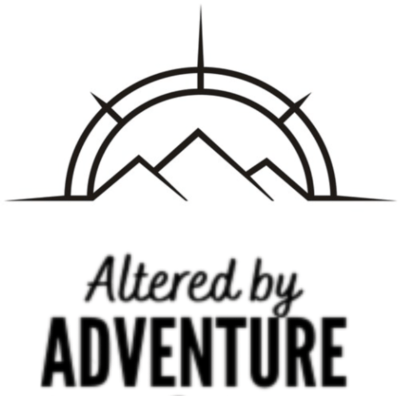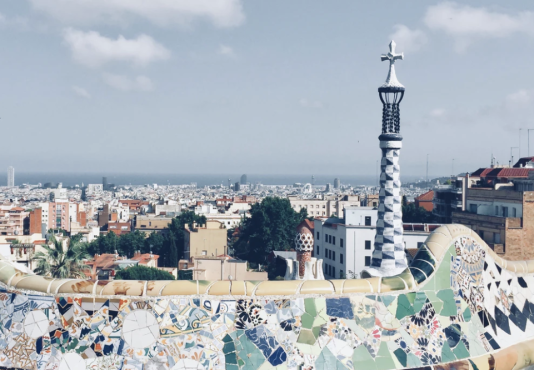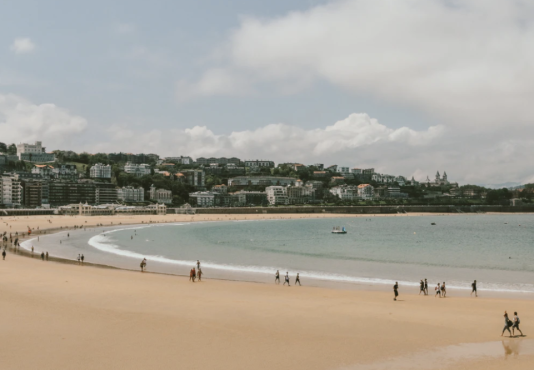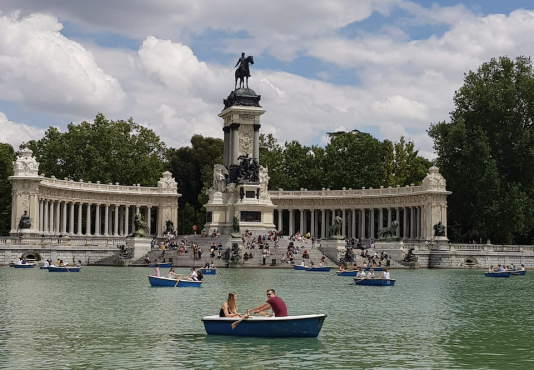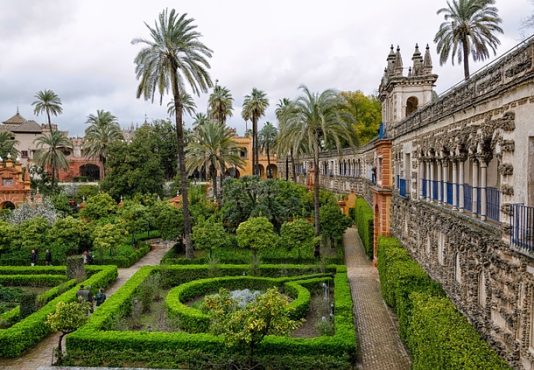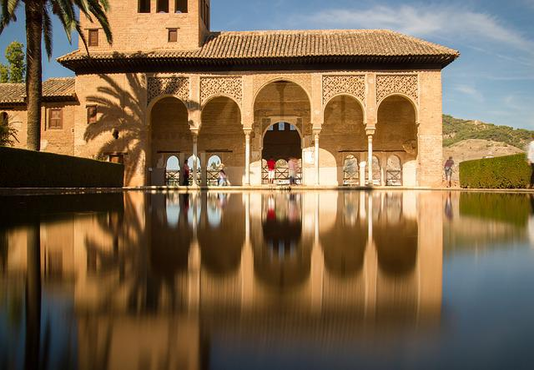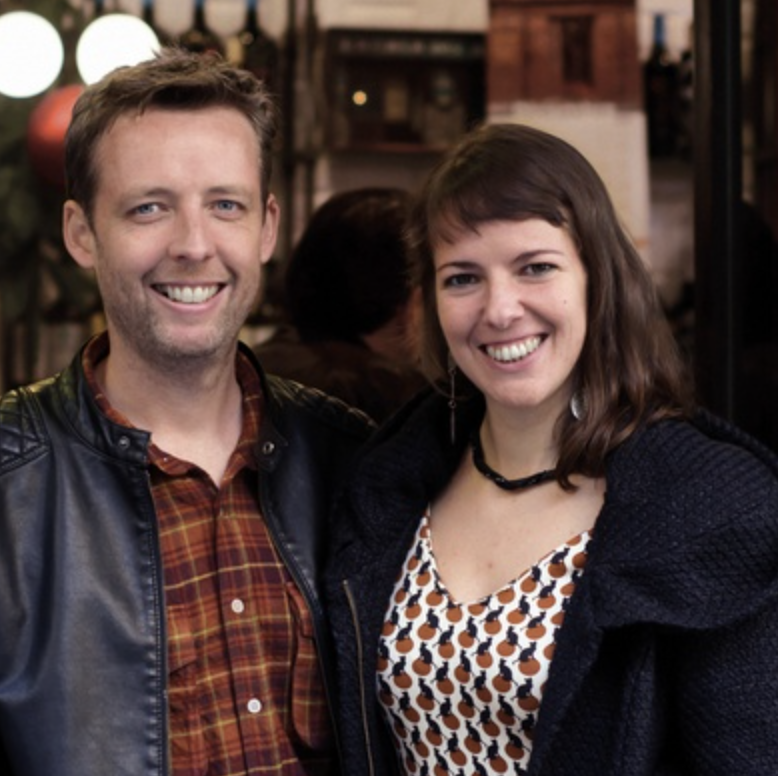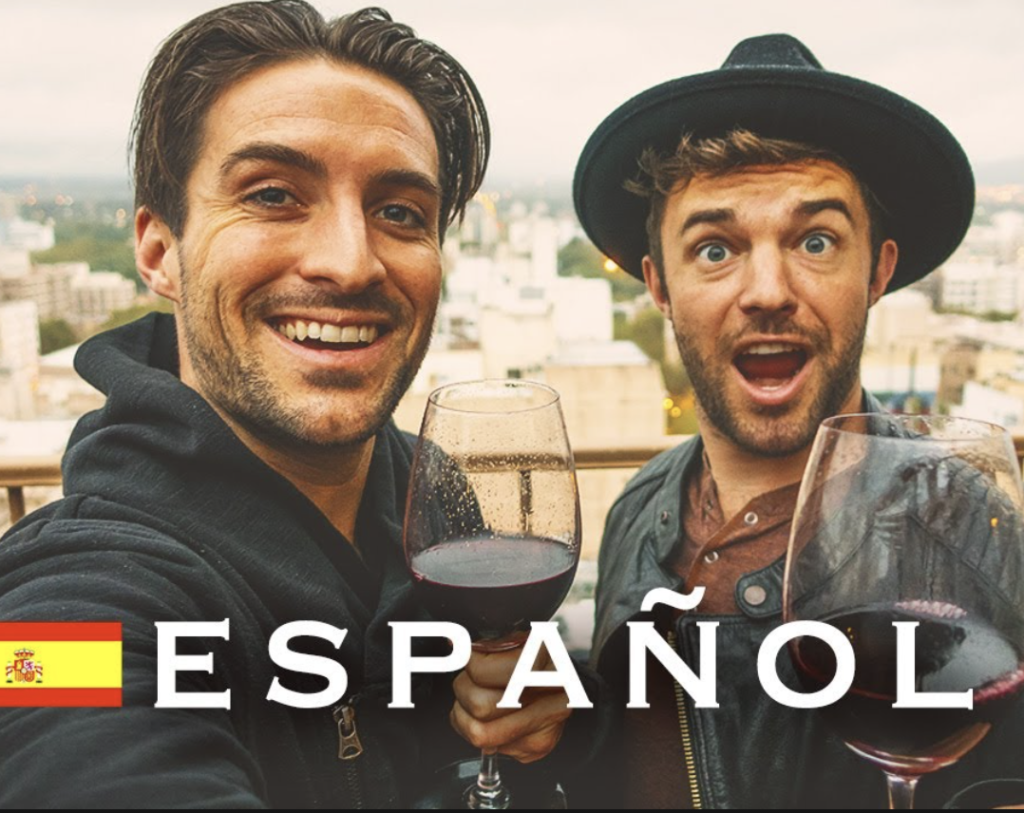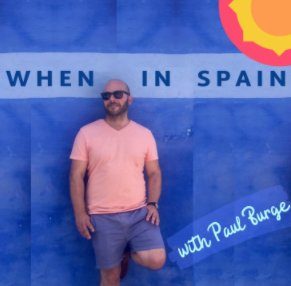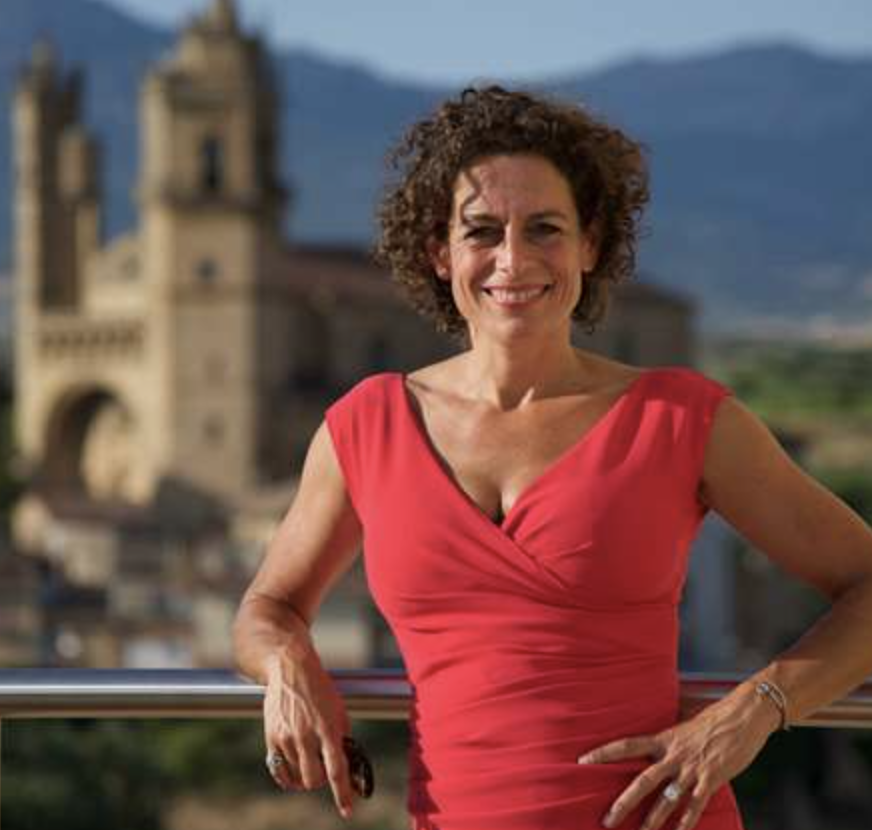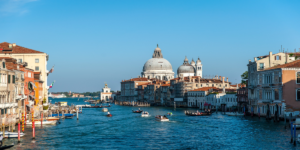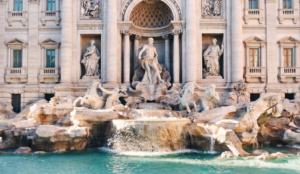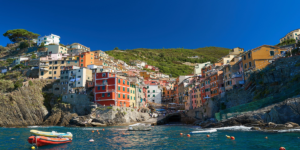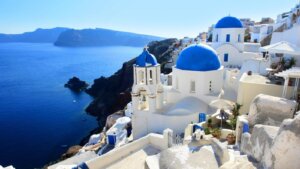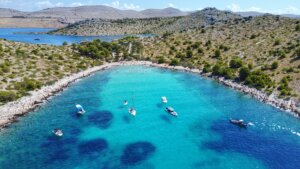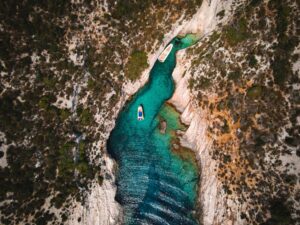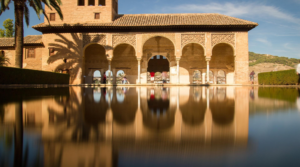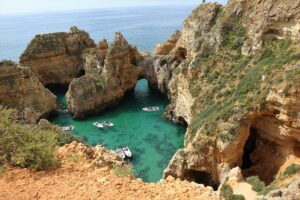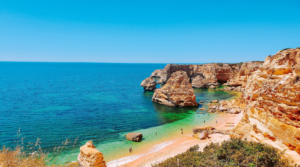
Welcome to Spain!
*Video Plays Once~Click 1X to Pause

About Spain
Spain is a country in Southwestern Europe on the Iberian Peninsula. It is unique with many different landscapes from mountains to deserts and coast on three sides. It has a tumultuous past that plays into its culture and architecture to this day. Spain occupies about 85% of the Iberian Peninsula. Spain is made up of 17 autonomous regions known in Spain as ‘Comunidades Autónomas’. Within the regions there are about 50 provinces. Spain also includes the Canary Islands, Balearic Islands in the Mediterranean Sea.
The Romans conquered the region around 200 BC, naming it Hispania. Spain remained under Roman rule until the fourth century. Then the Visigoths ruled for about 400 years. Then the Moors from Norther Africa conquered Spain and set down Muslim rule for 700 years. In the middle 15th century was a time called the Reconquista, which was a movement to push out the Muslims and spread Christianity. In 1492, Christopher Columbus arrived in the New World on behalf of the Catholic Monarchs. From the 16th until the early 19th century, Spain ruled one of the largest empires in history, which was among the first global empires; its immense cultural and linguistic legacy includes over 570 million people.
Spain is filled with incredible history and culture. The food, dance, and other aspects of the Spanish culture are amazing to experience. Parts of Spain like Catalunya, Basque Country, & Andalusia do have their own dialect and even their own unique language. From the humid coast to the arid center, there is so much to experience (Wikipedia: Spain). Open up these pages to find more about this mysterious, historical and engaging culture.
A special thank you to MM Travels for this amazing video that takes you all through Spain. There is so much to discover, so look deeper into this page to get your itinerary started! Check out Visit Spain for the Official Travel Site.

Country Planning Guide
Map of Spain
Regions of Spain
- Basque Country- autonomous region with its own language and culture, well-known city of San Sebastian, cooler weather, cooler, high surf
- Galicia, also in the north, well known for Pamplona, running of the bulls
- La Rioja-locate just below Basque Country, over 500 wineries
- Catalunya-well known city of Barcelona, Gaudi’s influence, las Ramblas, different dialect and culture, near Pyrenees Mountains, sandy beaches
- Madrid-center of the country, incredible palace, Retiro Park, Playa Mayor, Sao Miguel Mercado, delicious tapas, Prado Museum
- Castilla La Mancha-just below Madrid, historic city of Toledo, amazing architecture, writings of Don Quixote, 3 religions in harmony
- Castilla Leon-large region bordering Portugal
- Valencia-beautiful coastline, known for Paella, Principe Philipe Science Museum
- Andalusia-fiery Flamenco, moorish influence, impressive cathedral, incredible southern coastline, authentic food, colorful festivals

Geography Now
For a hilarious yet informative few minutes on Spain, you will learn so much about geography, history, people, and other interesting facts. Click HERE to see other videos as Geography Now works through the alphabet.

What to Know Before You Go
Check out the content in each slider to help you prepare for your trip to Spain! We will share with you information on the best time to go, culture, language & currency. We also give suggestions on transportation and cost saving ideas. Learn more about the culture and food so you are ready of the best trip ever!
*Be sure to click on the slider to stop and read, and click again to move forward or the button at the top right.

When you think of Spain, you may think of sunny days, vast coastlines, sangria, but there is so much more to this country. The terrain spans from the coasts, to mountains, to arrid flat land. It is unique in that the north coast can be rainy and cool and the south can be arid and hot most of the year. The best time to visit Spain is during spring or fall. Do keep in mind that if visiting in August, besides being very hot, many store keepers and restaurant owners may be on holiday. Also keep in mind that the prices may be higher in summer but if that is your only option, you can make it work!

Spain has been influenced by ancient Roman Empires, and Moorish Empires among others. The language, food and architecture vary throughout the country. Spain has such a rich culture that is wonderful to explore. In the North, the people of Basque Country speak a different language and have different customs. In Catalunya, the region of Barcelona, there is a different dialect and also varied history and customs. For instance, Valencia is known for Paella, and Andalusia is known for Flamenco dance. Each part of Spain has something new to offer. It is worth looking more into the regions to find what interests you. Spain is predominantly a Catholic country and festivals and celebrations occur through the year. One of the most well known festivals is the running of the bulls in Pamplona. Do check into information on festivals if you want to work that into your trip.

It is very easy to travel through Spain. The highways reach many larger cities and the trainline offers even high speed options. It is very easy to rent a car in Spain. Check sites like Booking.com for options. If you are planning to visit Portugal, do remember that you need to pick up and drop off the car in Spain. If you choose another city for drop off, there may be an extra fee. If you are planning to visit more than one place, it is possible to fly into one city and out of another. We found a great deal out of Barcelona so we flew into Madrid and took the high speed train to Barcelona to easily experience both cities. The train system is easy to use. Suggestions will be in our Spain tips area on how to research train routes.

You can find very affordable flights from the U.S. even by flying into London or Paris from major airports like New York, Chicago, Denver, etc. In Spain the best way to save is to stay outside of the tourist areas in places like Barcelona and Madrid, for example. With public transportation it is a better and more authentic way to travel. Also partake in the tapas culture. It is so fun to plan a set of taverns to visit, like Calle Cava de Baja, in Madrid, for example. Some of my best memories were eating mushrooms on a stick in the basement of a tavern on that street. Also do partake in the amazing wine that comes from that region and from the north. As for activities, do try booking ahead online to skip the line. And consider venues, like Flamenco performances, that are not in tourist areas. Read reviews and plan accordingly. Spain is not a very expensive country, especially a little farther out of the city. Do try to add an area in a smaller village for the best experience. And do not worry, as many speak English, and if they don’t you will most likely get by with the little Spanish you may know.

A great thing about a trip to Spain is that there really is something for everyone. With miles of beaches and amazing mountain ranges like the Pyranees, it is easy to plan so many experiences in one trip The regions and towns offer something different throughout so be sure to look deeper into these areas to get the best out of it. Some of the most famous attractions, like Sagrada de Familia in Barcelona or Alhambra in Andalusia, or the Prado Museum in Madrid are only to name a few. When looking at each city and town, consider the sites you might want to see and consider purchasing ahead online. I also like personal guides that can give you the history and a different perspective. It is good to look into local guides and besides this site, they can be found on AirBNB experiences, Tripadvisor, Getyourguide, etc.

Spain has a variety of special dishes that offer a unique and memorable experience. Each region of Spain has a specific food or two that is worth trying. Tapas are available in local taverns. It can range from olives to more extensive bite sized shared plates. In northern Spain, tapas are called pintxos. Paella (Spanish rice dish) can be aimed at tourists. If there are big signs outside with pictures of the dish, be wary of that. Another great food to try in Spain is churros. Churros are fluffy long, fried pastry dipped in thick chocolate. There is nothing like that combination of dipping churros any time of the day. Spanish wine is plentiful in restaurants through the country. It is super affordable and really good! Vermouth is a fortified wine, that is very popular in Spain. I thought it was a drink mixer, but I can tell you it has a rich flavor that really goes great with tapas. There are over 500 wineries in Spain and you usually order by region.

The currency in Spain is the Euro. It is easy to access ATM machines and most taverns take credit cards. Make sure you have cash if visiting areas outsie of the main city. Tipping is not expected in Spain for dinners or services. For fancier meals, a 10 percent tip could be left but is by no means obligatory. Whats Ap is used by locals to communicate and can be done off of wifi. You also may want to consider a mobile Wifi to avoid expensive mobile phone bills when you return.

It is important to note that different parts of Spain can provide diferent landscapes, climate, and even culture. The beaches are white and sandy, the center is dry and arid and the northeast offers beautirful Pyrenees mountain range. Spain has many amazing islands, including Canary Islands, Mallorca, and Ibiza. There is so much to experience. Dig into your options to make the best itinerary possible. Something to be aware of when traveling to larger cities like Barcelona and Madrid, is that pickpocketers can ruin a trip. Just be mindful on where you place your valuables.

Top Destinations

Get Inspired - Podcasts, Blogs & Video
Top 10 in Spain
Ryan Shirley always manages to bring life to these amazing places. His photography and video work is some of the best I have seen. He takes you to the most awe-inspiring sites. Be sure to check out his website and YouTube Channel. by clicking Explore More.
If you are planning a trip to Spain you HAVE TO follow this amazing couple. They will show you everything from ordering tapas in a local neighborhood to spending time in the very best restaurants. We got the pleasure of meeting them one evening in Madrid. One of our best resources when we planned our trip.
These brothers give you the highlights but also respect the local culture and encourage you to go beyond just a visit. Their tips take you off of the beaten path to experience some of the best the country has to offer.They lived in Spain for a few years and really can take you to the best kept secrets. Click here to get access to their site on Spain
The When in Spain show is a weekly podcast in Spain, about Spain. Paul Burge, a former BBC journalist moved to Madrid over five years ago and started interviewing folks all over the country. The podcast really sheds a light on the culture, history, sites, and food. The website allows for you to easily search what interests you.
Spectacular Spain by Alex Polizzi on YourTube has six great episodes that takes you all over Spain to learn more about the people, culture, customs, and of course, food. She travels to all parts of the country showcasing how each region is so different. Click on the title to be taken to the YouTube Series.
Top 10 in Spain by Touropa
Touropa offers a variety of Top 10 throughout Europe. Be sure to catch their Spain Top 10 and click for the most comprehensive travel guide on all things Spain!

Get Inspired - Spanish Recipes!

